Material Collection
Composite Wood Products
Wood is considered a natural and healthy material. Trees naturally sequester carbon from the atmosphere and biodegrade at the end of their life. However, when wood pieces are glued together, these composite wood products often contain formaldehyde, a human carcinogen, leading to throat and blood cell related cancers. Formaldehyde is an ingredient in the glue, a volatile organic compound (VOC), allowing it to off-gas into indoor environments. For healthier products, look for composite wood products with “No Added Formaldehyde” (NAF). And be aware of products that use substitutions which also may be harmful.
The composite wood products in this collection all comply with the California Air Resource Board (CARB) standard for No Added Formaldehyde (NAF), Ultra-Low Emitting Formaldehyde (ULEF). In addition, we have evaluated regrettable substitutions for formaldehyde – such as resins containing other hazardous substances like isocyanates ( MDI, TDI, or HDI), or polyurethane.
Note: As of 2018, CARB no longer recognizes No Added Urea Formaldehyde (NAUF) products
Below are a few examples of composite wood that meet our rigorous evaluation. For further help on your own search for healthier composites, scroll down to "Spec Guidance”.
Composite Wood Products
7 products
About Our Collections
The goal of our collections is to help promote transparency in the material ingredients of building products by fostering knowledge and awareness of products and materials for which life-cycle information is available, and that have environmentally, economically, and socially preferable life-cycle impacts.
Keep an eye out for the following symbols:
A Healthier Affordable Building Product
Products with the designation of "Healthier & Affordable" were specified and installed in at least one of our Case Studies of healthier affordable housing.
Available at the Donghia healthier Materials Library
The Donghia healthier Materials Library library is open to Parsons student and faculty. Learn more about access and opening hours here.
Low Embodied Carbon
“Embodied Carbon” is the total amount of carbon emitted during the process of making a material. *HML refers to a manufacturer's EPD to determine whether a product's A1-A3 carbon emissions falls within HML's threshold for Low Embodied Carbon.
New Product
This product has been added to the collection within the past six months.
Product in Development
Products with this designation identify they are currently scaling or only available in markets outside of the building industry. they could be experimental or in use in capsule collections.
Available in the EU
Products with this designation are currently available only in the European Union and identified as being an exemplary healthy option in the respective product group.
Ingredient Disclosures
There are several ways of evaluating a material’s health that we include with product information. Disclosures are reports by manufacturers about product ingredients, impacts, or other attributes.
Key Disclosures include:
Health Product Declaration (HPD)
A voluntary technical specification for reporting information on product contents and associated health information, intended to be the health-analogue to Environmental Product Declarations (EPDs).
Declare Label
Declare is a transparency platform and product database that answers three questions:
1. Where does a product come from?
2. What is it made of?
3. Where does it go at the end of its life?
Environmental Product Declaration (EPD)
A standardized format for communicating the environmental effects associated with a product’s raw materials extraction, energy use, chemical makeup, waste generation, and emissions to air, soil, and water.
Safety Data Sheet (SDS)
A reporting format that provides basic information about a material’s chemical ingredients, the potential safety hazards to installers, and recommended practices for installation.
USDA Certified Biobased Product Label
Managed by the U.S. Department of Agriculture (USDA), the goal of the BioPreferred Program is to increase the purchase and use of biobased products.
Other
| Manufacturer | Product | Ingredient Disclosures |
|---|---|---|
| Columbia Forest Products | PureBond Hardwood Plywood |
PureBond Hardwood PlywoodUsed in Healthier Affordable HousingAvailable At the Donghia Materials LibraryColumbia Forest Product's PureBond hardwood plywood is formaldehyde-free, and is instead made with a soy-based binder. This North American-made product is also cost-competitive with standard plywood products, making it a fantastic healthier alternative. It contains 95% Biobased Content and has been awarded the USDA Certified Biobased Product Label in the BioPreferred® Program. CategoryDimensional Surface, PlywoodManufacturerColumbia Forest Products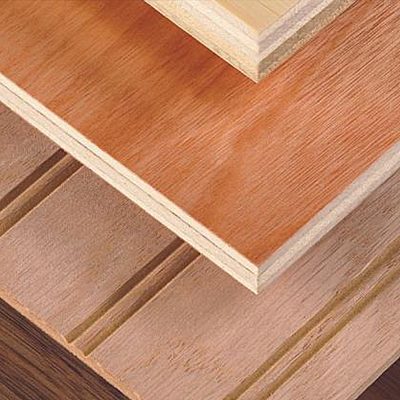
Material composition*Wood Dust 95.65%, Other components below the reportable levels, (the specific chemical identity and/or percentage of composition has been held withheld as a trade secret) <1% *as reported by the manufacturer AVAILABLE SIZING2’x 4’, 2’x 8’, 4’x 8’, 4’x 10’ Panels - available in standard thickness COLORSVariety of wood species CERTIFICATIONS & DISCLOSURES
Health Product Declaration (HPD)
Declare Label
Environmental Product Declaration (EPD)
Safety Data Sheet (SDS)
USDA Certified Biobased Product Label
Other
FSC Certification
Rainforest Alliance Certification
Contributes to LEED credits
USDA Certified Biobased Product Label
Additional DocumentsLast UpdatedDecember 16, 2025 |
| Columbia Forest Products | PureBond Classic Core® Plywood |
PureBond Classic Core® PlywoodUsed in Healthier Affordable HousingAvailable At the Donghia Materials LibraryClassic Core® is a combination core panel construction where cross bands of thin MDF are utilized in place of veneer cross bands. Classic Core® can be manufactured with bonded crossbands which do not contain added formaldehyde. PureBond Classic Core® may contribute to LEED® 2009 credit IEQ 4.4 and conforms to CARB II exempt emission requirements called for in LEED V4. It contains 95% Biobased Content and has been awarded the USDA Certified Biobased Product Label in the BioPreferred® Program. CategoryDimensional Surface, PlywoodManufacturerColumbia Forest ProductsMaterial composition*Veneer: Wood; Decorative veneer: Wood; adhesive: Polyvinyl Acetate; Water; Defatted Soy Flour; Magnesium oxide (MgO); Hexanedioic acid, polymer with N-(2-aminoethyl)-1,2-ethanediamine and (chloromethyl)oxirane; Monopotassium Phosphate; Glycerin; Corn Starch; Borax; Calcium hydroxide (Ca(OH)2) *as reported by the manufacturer AVAILABLE SIZING4’x 8’, 4’x 10’ Panels - 1/2”, 5/8”, 3/4”, 1” and 1-1/4” thickness COLORSVariety of wood species CERTIFICATIONS & DISCLOSURES
Health Product Declaration (HPD)
Declare Label
Environmental Product Declaration (EPD)
Safety Data Sheet (SDS)
USDA Certified Biobased Product Label
Other
FSC Certification
Rainforest Alliance Certification
Contributes to LEED credits
USDA Certified Biobased Product Label
Additional DocumentsLast UpdatedDecember 16, 2025 |
| Investwood | Viroc |
VirocViroc is a composite material, made from a mixture of pine wood particles and cement. This lends the particle board the flexibility of wood with the look of poured concrete. Viroc is ideal for interior cladding, ceilings, trim, countertop, and other specialty applications. This material is moisture resistant, fire retardant, and load bearing, and provides thermal and acoustic insulation. CategoryDimensional Surface, Particle BoardManufacturerInvestwood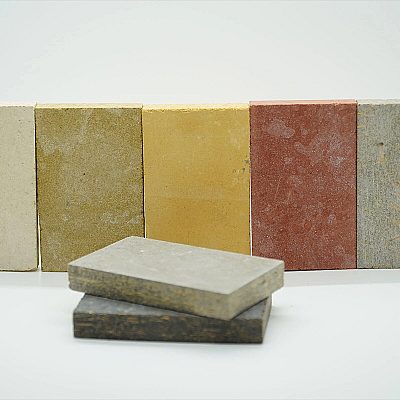
Material composition*Portland Cement, Pine wood shavings, Sodium Silicate, Aluminum Sulphate, Water *as reported by the manufacturer AVAILABLE SIZING2600 x 1250 mm / 3000 x 1250 mm, thickness range 8mm-32mm COLORSYellow, Red, Black, Blue, White, Ocher, Grey, in both sanded and un-sanded CERTIFICATIONS & DISCLOSURES
Health Product Declaration (HPD)
Declare Label
Environmental Product Declaration (EPD)
Safety Data Sheet (SDS)
USDA Certified Biobased Product Label
Other
Additional DocumentsLast UpdatedDecember 16, 2025 |
| Haley Brothers | Wood Doors |
Wood DoorsUsed in Healthier Affordable HousingHaley Brother's hollow core doors are NAUF, meaning they are made with no added urea formaldehyde. The doors are made from a honeycomb paper core and finished with a hardwood veneer, and are recommended for interior use. CategoryDoor, Wood VeneerManufacturerHaley Brothers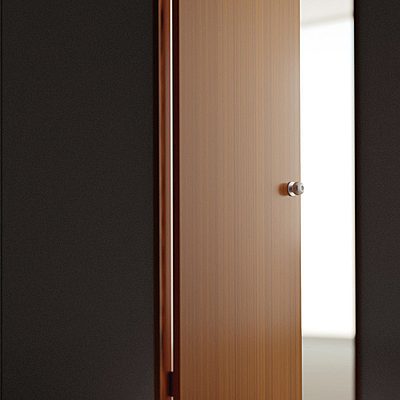
Material composition*Expanded paper core, softwood lock blocks, type II interior adhesive, hardwood laminate face *as reported by the manufacturer AVAILABLE SIZING4' x 10', available in 1 3/8" or 1 3/4" thick COLORSWide range of wood types and colors CERTIFICATIONS & DISCLOSURES
Health Product Declaration (HPD)
Declare Label
Environmental Product Declaration (EPD)
Safety Data Sheet (SDS)
USDA Certified Biobased Product Label
Other
Last UpdatedDecember 16, 2025 |
| Masonite Architectural | Cendura Standard Wood Veneer Doors |
Cendura Standard Wood Veneer DoorsUsed in Healthier Affordable HousingThe Cendura Standard Wood Veneer Door was previously sold under the brand name Mohawk. Their doors meet CARB Phase 2 standards for formaldehyde emissions. ULEF and FSC doors are available upon request. *NOTE: This product is available in ULEF as opposed to NAF, meaning it contains low-emitting formaldehyde. CategoryDoor, Wood VeneerManufacturerMasonite Architectural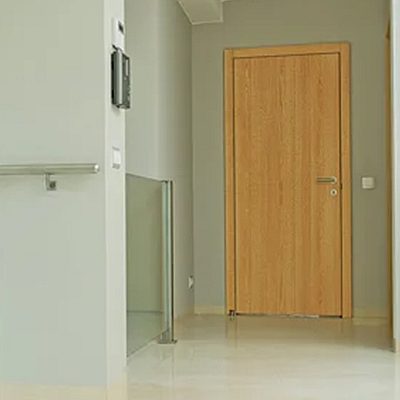
Material composition*Surface: wood veneer, Crossbands: high density fiberboard (HDF), Vertical edges: softwood/low density hardwood, Horizontal edges: structural composite lumber, Adhesive: type 1, Core: structural composite lumber *as reported by the manufacturer AVAILABLE SIZINGup to 4'x9' singles and 8'x10' pairs, available in 1 3/8" or 1 3/4" thick COLORSWide range of wood types and colors CERTIFICATIONS & DISCLOSURES
Health Product Declaration (HPD)
Declare Label
Environmental Product Declaration (EPD)
Safety Data Sheet (SDS)
USDA Certified Biobased Product Label
Other
Additional DocumentsLast UpdatedDecember 16, 2025 |
| Roseburg | Roseburg: Medite II MDF |
Roseburg: Medite II MDFAvailable At the Donghia Materials LibraryRoseburg’s Medite II MDF is a high strength, MR30 grade moisture-resistant, multi-use Medium Density Fiberboard made from up to 92% of recycled cellulose content. Medite II has no added formaldehyde (NAF), is SCS Certified for 92% of pre-consumer recycled content, CPA ECC Sustainability Standard Certified, and Forest Stewardship Council (FSC) and Sustainable Forestry Initiative (SFI) certified. Architects and designers can earn LEED v4 Low Emitting Materials Credit Support project credits. Roseburg's Medite II contains less than 7% isocyanate resin. Currently, this is a healthier alternative to most MDF's with as much as 10% resins and more, or use phenolic resins or added formaldehyde. CategoryDimensional Surface, MDFManufacturerRoseburg
Material composition*Wood Fiber 82-97%, Water 1.8-8%, Isocyanate Resin 0.75-7.35%, Benzene 1-isocyanato-2[4-isocyanateophenyl)methyl] 1%, Borate Flame Retardant <1%, Urea <1%, Slack Wax <1%, Undisclosed <1%, Octadecanoic Acid <1% *as reported by the manufacturer CERTIFICATIONS & DISCLOSURES
Health Product Declaration (HPD)
Declare Label
Environmental Product Declaration (EPD)
Safety Data Sheet (SDS)
USDA Certified Biobased Product Label
Other
Additional DocumentsLast UpdatedApril 01, 2024 |
| Fundermax |
Biofiber Board
|
Biofiber BoardAvailable in the EUThe Fundermax biofiber board is made of 100% sustainable, certified wood. The production is based on a wet fiber process which avoids any petrochemical binder. Instead, the wood's own natural resins are dissolved and serve as binders in the board. Due to the board density, an 8mm board can replace 18mm OSB. The product can be used for interior wall construction, furniture and also finds use in product design. The 8mm board is 100% airtight, making an additional membrane obsolete. Per manufacturer, it has good paintability with a mineral based paint such as Keim. A bio-based glue is in development for bonding 8mm boards to achieve thicker boards. CategoryDimensional Surface, WoodManufacturerFundermax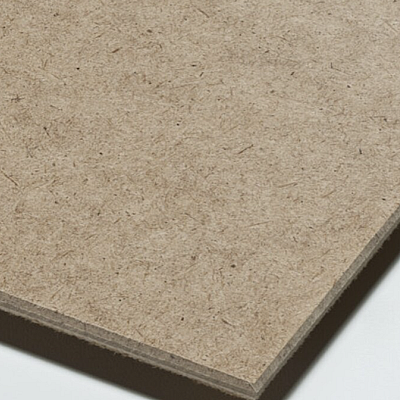
Material composition*100% wood fiber *as reported by the manufacturer CERTIFICATIONS & DISCLOSURES
Health Product Declaration (HPD)
Declare Label
Environmental Product Declaration (EPD)
Safety Data Sheet (SDS)
USDA Certified Biobased Product Label
Other
Natureplus
QNG
Last UpdatedAugust 21, 2025 |
The products in this collection have all been evaluated holistically for their contents and performance. To be considered, a product must disclose at least 75% of its ingredients by weight and avoid the biggest health concerns, as indicated by their disclosure documentation. For composite wood, this means that it complies with the California Air Resource Board (CARB) standard for No Added Formaldehyde (NAF) or Ultra-Low Emitting Formaldehyde (ULEF). We understand polyurethane and isocyanates such as MDA to be a regrettable substitution for formaldehyde. However we do not see enough options in the current market that are free of both formaldehyde and isocyanates, and believe formaldehyde to be a more pressing health concern. The products in this collection all have isocyanate levels at or below 10%.
*Note that, as of March 22, 2019, all non-structural composite wood products need to be EPA TSCA Title VI Compliant. TSCA Title VI uses similar criteria to CARB Phase II; a comparison of the two standards can be found here. In order to comply, composite woods must be below certain formaldehyde emissions thresholds, or certified as CARB NAF or ULEF.
All products are evaluated for embodied carbon {kg of CO₂ eq /square meter) if (LCA) and (EPD) documentation is available. Those under 5 kg of CO₂ equivalent per square meter earn the HML Standard for Low Embodied Carbon (LEC) and are clearly marked.
Spec Guidance
Inquire with manufacturers for transparency and LCA information as much as possible. Materials new to the market may not yet have certifications and disclosures and often are made proprietarily.
Prefer FSC or PEFC certified wood. The certification from the Forest Stewardship or Sustainable Forestry Initiative ensure that the materials are sourced responsibly and sustainably. If specifying wood from your region, ensure that it is sustainably grown and harvested.
Solid wood can be the healthiest choice. Consider if solid wood is an option before looking for composite-wood products. Solid wood omits the need for resins or binders altogether, avoiding concerns of formaldehyde or regrettable substitutions.
Be mindful of the amount of binder. Because the binder contains most of the formaldehyde in composite wood products, less binder means less toxic content. Plywood tends to have the lowest amount (3.5% by weight), while MDF, HDF, and particleboard have much higher concentrations (10%, 11.4%, and 12.4% respectively). (HomeFree)
Prefer products that meet the NAF Standard for No Added Formaldehyde. This is currently the highest federal standard regulating formaldehyde. If NAF is not an option, consider products that are labeled as Ultra-Low Emitting Formaldehyde (ULEF). Although not quite as healthy as NAF products, these options are still preferable to those that use standard formaldehyde-based resins.
Look for lignin, starch and plant protein (such as soy) based binders. Methylene diisocyanate (MDI) resins are a regrettable substitution for formaldehyde and can still be hazardous to workers (HomeFree).
Be mindful of finishes. Shellac, lacquer and polyurethane involve solvents, VOCs and isocyanates, which all pose health risks.
Prefer products that are BlueAngel Certified.
For products in the EU, look for DNGB Platinum and Gold certification. Refer to the DGNB Navigator.
Updated May 17, 2017
Related Tools and Guides
More Collections
Join Our Academic Network
Get Access to our carefully researched and curated academic resources, including model syllabi and webinars. An email from an academic institution or a .edu email address is required. If your academic institution does not use .edu email addresses but you would like to join the network, please contact healthymaterialslab@newschool.edu.
Already have an account? Log in